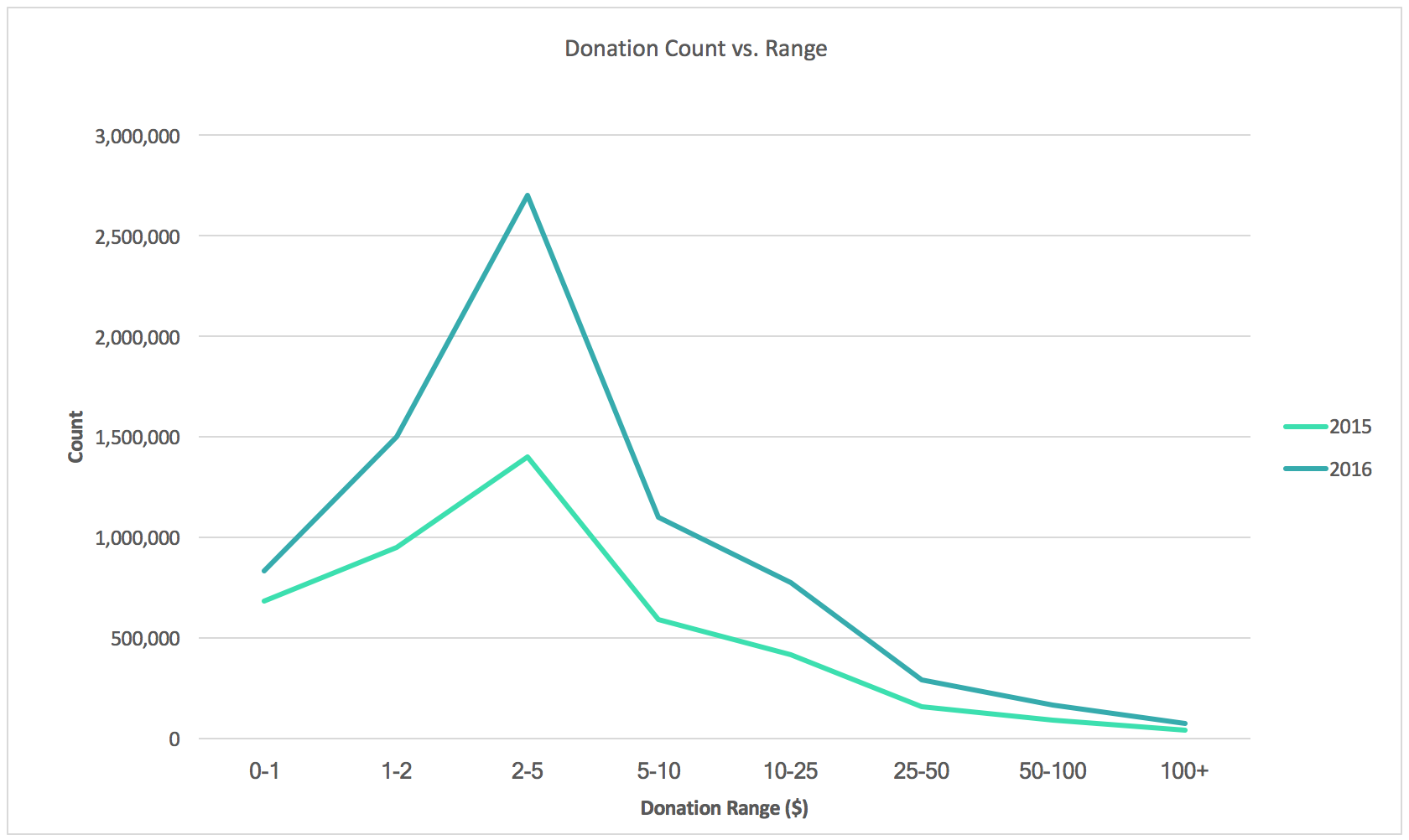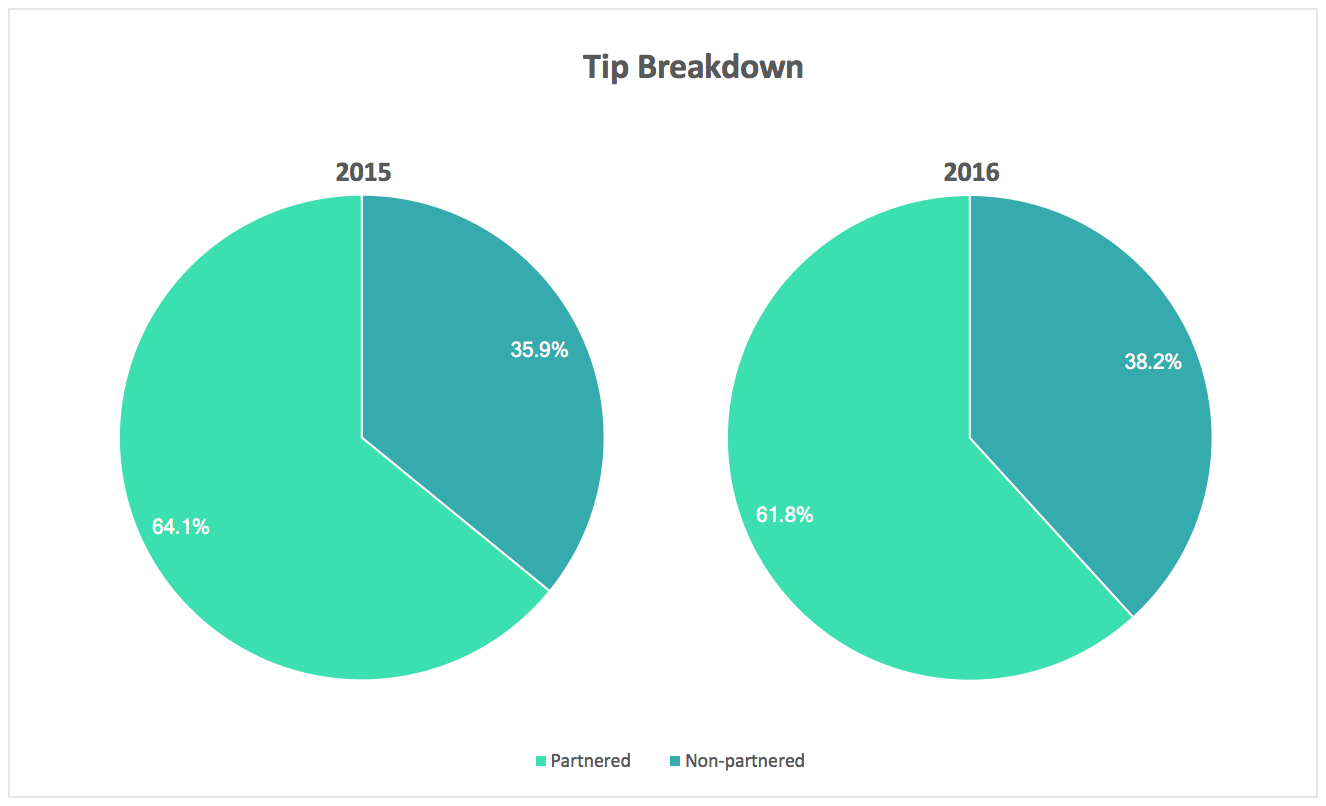
Livestreaming online has grown tremendously over the past couple of years. What started in Gaming with Twitch is now fast-becoming a mainstream phenomenon with Youtube Live, Facebook Live, Beam/Xbox/Windows, Twitter and others. The ecosystem in Gaming is considerably more evolved, and we believe that many of the trends and insights presented here will show up in mainstream video broadcasting over the next few years.
Livestreaming has a power law: most-consumed video content (by viewable hours) is produced by a very small group of passionate broadcasters. These broadcasters either aspire to, or already do this, as their full-time job. However to be able to do that successfully they need to generate a source of income that allows them to broadcast 80+ hours a week. A successful monetization strategy therefore is central to having a successful livestreaming ecosystem.
Successful monetization enables power broadcasters, who produce the majority of video content that is consumed in livestreaming.
This report looks at the most-important sources of monetization for broadcasters on Twitch, and how they have trended over time from January 2015– December 2016. This report applies only to individual streamers and not to Esports teams or organizations. It does not include data from other streaming platforms such as Youtube Live or Beam. The terms ‘streamers’, ‘channels’ and ‘broadcasters’ are used interchangeably.
Highlights
Tipping volume processed by Streamlabs jumped 84% from $43.6 million in 2015 to $80.2 million in 2016;
Number of unique channels generating $1+ in income grew 78% from 99,725 to 177,814; channels generating $10,000+ grew 89% from 2015 to 2016;
Average Revenue per Follower (ARPF) grew dramatically: 93% for non-partnered streamers, and 72% for partnered streamers from 2015 to 2016.
Where is the data from?
Streamlabs processes tips for around 78% of the Top 25K Twitch streamers that use a tipping service. We also process notifications for other channel events. We’ve put this data together in aggregate form to show interesting trends in streaming activity and monetization over a two-year period from January 1st, 2015 — Dec 31st, 2016.
Tipping volume jumped 84% in 2016
Tips are given by viewers to streamers through popular online payment methods such as credits cards, Paypal or other regional methods depending on the country. These typically trigger a thank you notification (an ‘alert’) inside the video, with an optional message entered by the viewer.

This is normally triggered when viewers support broadcasters via subscriptions, tips, follows or other similar actions. This encourages viewer participation and support, particularly for tipping.
This is the total tipping volume processed by Streamlabs directly, and a total estimate (based on marketshare) for the industry:

Total tipping volumes, both processed by Streamlabs and overall, nearly doubled year-on-year driving significant income gains for streamers. Total volume estimates for 2015 may be higher, since other available data was less reliable back then.

$1–$2 and $2–$5 tips had a larger increase year on year, relative to other tip amounts. This suggests an influx of new tippers trying small tip amounts, or tippers spreading the wealth in small tips among more channels. In either case, overall spending was up substantially year on year.
Given Twitch’s primary geographic footprint of viewers in North America and Europe, the most popular payment method chosen by viewers was Paypal. Other payment methods were introduced during the course of 2016, and to enable a fairer comparison, this is a snapshot of payment methods used by viewers during December 2016.

While this shows a clear preference by gamers on Twitch for Paypal, the results are probably skewed too much one way by our particular payment checkout flow that lists Paypal as the first option. It would be interesting to compare this to data from Twitch, Humble Bundle or Steam to see if e-wallets such as Paypal are favored to the same degree across the gaming ecosystem.
More and more channels are generating meaningful income: $10,000+ revenue channels increased 89%
The number of broadcasters who were able to monetize their channel jumped significantly in 2016 compared to 2015 across all ranges.

Monetized channels are ones that receive tip for the content they offer. In 2016, there were tens of thousands of new monetized channels compared to the previous year. Livestreaming is increasingly becoming a viable career for broadcasters.

Twitch-partnered broadcasters (commonly referred to as “partners” in the industry) totaled around 18,000 as of October 2016 (source: Keynote Twitchcon ‘16). Twitch partners have access to additional features such as subscriptions and cheering, which typically results in higher income from viewers, as well as additional sponsorship opportunities.

Average Revenue per Follower (ARPF) jumped 93% for non-partnered streamers
ARPF is calculated by dividing total income by total followers for all streamers using Streamlabs.
If a streamer has 10,000 followers and ARPF is 19.1 cents, it means on average, the streamer would make $1,910 in 2016.
It is important to note some caveats here:
- Viewers usually follow multiple channels, so 1 follower does not equal 1 viewer. Viewers are always less than followers (with few exceptions). This is not ARPU in the traditional game industry model. We report what we can measure, and in this case it is followers.
- There is a very high amount of variability among size of channel, by language, by region, by game played and by gender of the streamer. Actual results observed by a particular channel may be several times higher or lower than the reported average.
- Not all streamers use Streamlabs. While the majority of streamers earning an income are included here (~78%), a significant portion is not.
- Not all streamers who use Streamlabs for tipping also use us to process notifications for Twitch subscriptions. Some may not process any notifications at all. When notifications are not processed, subscriptions are not counted in the data below. Given that, the subscriptions percentage reported below is likely under-reported.
What ARPF is especially useful for:
- Allowing an average streamer to roughly forecast how much they need to grow their channel to earn a liveable wage, based on per-follower revenue averages;
- Measuring if the same community of viewers are spending more or less over time. This is especially useful if the total pool of viewers has stopped growing as fast, but each viewer has ‘matured’ and become comfortable with spending more to support their favorite broadcasters.

ARPF jumped 92.9% from 9.9 cents in 2015 to 19.1 cents in 2016 for non-partnered streamers, and 60.1% from 17.3 cents in 2015 to 27.7 cents in 2016 for partnered streamers.
As a streamer becomes partnered, they gain access to subscriptions, cheering, and ads. These are all new sources of income. Their viewers tend to also start ‘maturing’ as they have been part of the community for longer, and per-viewer spending tends to increase overall.
It is interesting to see how ARPF changes by size of channel (# of followers) for both non-partners and all channels:

The highest ARPF does not occur when the channel is tiny (<1k followers), or extremely large (100k+ followers). It increases with channel size up until 10k-100k followers, and maxes out there. Beyond that size, ARPF declines. And it makes sense: when channels get too large, each viewer is less committed and less loyal to the streamer. Large channels get more impersonal as they grow. This data suggests that monetization seems to be correlated with the strength of a viewer’s connection to the streamer, which has a diminishing return as channel size increases.
Share of tips given to smaller streamers for non-partnered channels increased slightly
Historically, bigger channels have commanded a huge share of the income all streamers receive, so this is a promising indication that smaller channels are getting slightly more of the total income. This is good for the overall community, and we hope this trend will continue in 2017.

Sponsorships, Ads, Esports & Other sources
Sponsorships and Ads are a smaller but still significant source of additional income. “Ads” are defined as 15s or 30s pre-roll ads run by Twitch, with a post-revshare CPM going to a partnered broadcaster. In conducting dozens of streamer interviews, we’ve concluded that such ads are a much smaller share of income (< 5%) compared to the sources discussed earlier. Many streamers run ad-free streamers to encourage viewers to support more via tipping or subscriptions instead.
“Sponsorships” are defined as custom sponsorship opportunities, where a sponsor works with a streamer independently of the streaming platform. We believe the custom sponsorship market contributed an additional net $10m — $20m to streamers in 2016. This was extremely concentrated with nearly all of it going to the top 1000 channels (by viewership). These are estimates and not processed directly by Streamlabs, and outside the scope of this report.
Other sources of income for streamers include:
- Subscription tools for non-partners (such as Gamewisp, Patreon etc);
- Custom sponsorships or retainers through eSports organizations or Streamer groups (such as TSM, Main Menu etc);
- Consulting gigs, such as coaching, art, software development, game promotion, or brand ambassadors.
While other sources are helpful, they have not yet scaled to levels where they are relevant to all streamers, and outside the scope of this report.
Want tips for your channel too?
Streamlabs provides a must-have suite of software tools for broadcasters to engage, monetize and grow their channels. We process tips for the majority of streamers, and are used by 78% of the largest 25K channels on Twitch and Youtube Live that use tipping. We are based in San Francisco, CA. Get tipping & beautiful, live notifications for your channel here.
Feedback? Let us know.